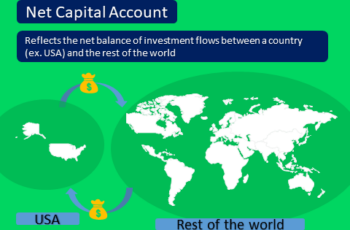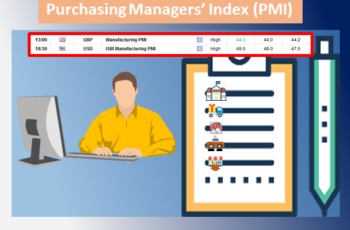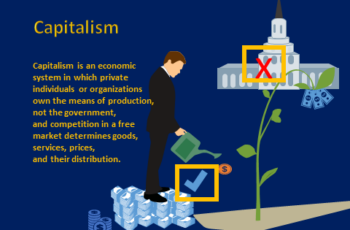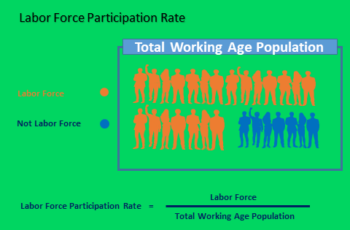Government spending refers to the government’s total expense and the net acquisition of non-financial assets.
In other words, government spending consists of salary and wages, investment, transfer payments, and interest payments on the loan.
Government expenditure is a huge part of the gross domestic product (GDP). Its size depends on the economic system. It tends to be the largest pi of the economy in a command economy, a little above or below 50% in a socialist country, and below 40% in a capitalist mixed economy.
For example, the U.S. government spending relative to GDP in 2022 was 36.25%, according to the IMF.
It is even higher in France which is relatively a socialist country. Its government expenses account for 58.33% of the GDP.
Categories of Government Spending
Generally, economists divide government expenditures into three categories: current spending, investment, and transfer payments (benefits and pensions).
But can we ignore the interest payments on national debt?
Probably not. That is why you will read interest payments as a separate category.
Notice that categorization varies by country. For example, in the USA government spending is broadly divided into discretionary and mandatory spending. Discretionary spending refers to the portion of the budget that Congress approves each year, such as military, education, and healthcare. Congress also legislates mandatory spending one in several years such as unemployment benefits and medicare.
Current Spending
Current spending is ongoing expenses.
The government in most countries is responsible for infrastructure maintenance that costs money. Moreover, it has buildings. The government spends money on buying materials and paying workers for maintenance. It is an ongoing cost.
The government also has employees. For example, according to Statista, the US government had 19.23 million employees in 2022. Salary and wage payments to workers and employees are part of the current spending.
Investment Spending
Investment (capital) spending refers to money spent on things (e.g. roads) for future uses.
The government needs to invest in infrastructures such as roads, dams, and buildings. These investments yield results in the future by lowering the cost of doing or living in the community. Moreover, they make living easier and provide opportunities for new industries.
Transfer Payments
Transfer payments refer to money that the government pays for free, such as social welfare benefits and subsidies.
The government pays welfare to support needy members of society so that they can meet basic human needs such as food and shelter. Welfare reduces poverty and helps children and others to get on their feet by reducing inequality and assisting beneficiaries’ health.
Subsidies refer to the government payments to firms and households to promote a public interest. For example, subsidies to agriculture and mining make a country more independent economically and help other industries to grow. The most well-known subsidy example is payment to purchase electric cars around the world to meet carbon emission targets. Electric cars do not pollute the air and are in the interest of the general public.
Interest Payments on Public Debt
The government accumulates debt by issuing bonds when it runs a budget deficit. A budget deficit is a situation when the government spends more than it generates revenue.
Of course, the loan is not free. The issuer should pay back the loan plus interest. For example, according to the Treasury Department, the US national debt net interest was $659 billion in fiscal year 2023, which ended September 30. It is over $60 billion more than Sweden’s GDP.
In the past decades, many governments such as the USA, France, the UK, and Japan continuously run deficits. Today, they issue new bonds to pay old bonds and their interests.
And they hope to collect more revenue in the future than they spend and pay their loans.
Government Spending Sources
A government needs funds to spend.
Where do those funds come from?
The short answer is taxes and the issuance of debt.
Or,
Government spending resources = taxes + issuance of national debt
Taxes
Taxes are the government’s charges on firms and individuals to cover the costs of government spending.
Generally, there are two groups of taxes: direct and indirect.
Direct taxes are those taxes firms and individuals directly pay the government. The word direct implies that a firm or individual directly pays the government. Here are some of the direct taxes:
- Personal income tax
- Corporate profit tax
- Capital gains tax
- Real estate and property taxes
Indirect taxes are those taxes that firms and individuals pay when they buy or use goods and services. The word indirect implies that a payer pays through a third entity. Here are some examples of indirect taxes:
- Value added tax (VAT)
- Customs tax
- Excise tax
- Sales tax
Issuance of Public Debt
Most developed countries continue running government budget deficits. It means that the government spends more than it collects taxes.
For example, the United States government budget is expected to be $1.6 trillion in 2024 and $1.8 trillion in 2025.
An easy task for the government is just issuing new bonds. It is a burden for future generations because they need to pay taxes to pay back these loans. And, it is not clear how they are going to pay.
Government Spending and National Debt
Governments of the majority of countries in the world spend more than they earn. In other words, they have a budget deficit.
(Some countries such as Ireland, Swiss, UAE, and Azerbaijan have a budget surplus)
Side note: there are three types of budget balance: budget surplus (revenue>expenses), budget deficit (revenue<expenses), and a balanced budget (revenue=expenses).
As a result, public debt increases over time due to new debts and accumulated interests. Today, these countries issue new debts to pay old debts and their interests.
Is it a problem?
Yes. An increase in government spending adds to taxes that future generations should pay. It is hard to believe that they can pay because:
- It is a lot. And it continues to go up in total.
- Population aging is fast. The working population is aging, and there will be fewer people working and more people consuming. There is no guarantee that they ever will be able to pay old loans.
Check out the following screenshots from usdebtclock.org
The U.S. is not alone. For example, Japan is in a worse situation than the United States.
Government Spending and Inflation
Inflation is the average rise in the price of goods and services.
So, does public spending cause the average price of goods and services to rise?
The short answer is yes. But it depends on the size of spending. If the government increases spending in trillions of dollars, it definitely cause inflation. Just remember what happened after COVID-19. Inflation and government both increased all over the world.
Economists agree that there are two types of inflation: a decrease in the supply side and an increase in the demand side. Government expenditure increases the demand side for goods and services. So, it should have an impact on an increase in demand and inflation.
Government Spending and Economic Growth
Economic growth simply means Gross Domestic Product (GDP) growth.
The following formula is the expenditure approach to measuring GDP, the most popular one.
GDP = G + C + I + (X-M)
In which:
GDP: Gross Domestic Product
C: Household Consumption
I: Investment
X-M: Export-Import (balance of trade)
Any element of the GDP formula affects the size of an economy. Government spending is the largest part of some country’s GDP. For example, in France, it is almost 60% of the GDP.
So, government spending has a direct relation with the economy. If it increases or decreases the economy follows.
For example, the US government stimulus package helped the economy to recover from the COVID-19 recession in less than three months.
Government Spending Relative to GDP
Government spending relative to GDP refers to the size of a government in a country. It states the share of the government in the economy. And, it is described as a percentage of GDP.
Government spending as a percentage of GDP varies from 0% to 100%.
If the share of a government is 0%, it is completely a traditional economy without a government. A small percentage of government spending relative to GDP indicates a nation to be capitalist. Next, if the share of public expenditure is around 50% (mostly above), then it is a socialist nation. Lastly, if it is nearly 100% it is a communist nation.
Notice that it is difficult to say that a country is purely socialist, communist, or capitalist.
For example, a pure capitalist does not exist. The United States is the most popular capitalist nation but still has social programs such as social welfare and Medicare.
Another example is Yemen and Venezuela with government spending around 12%. These countries are in Crisis. Their government’s small share does not indicate that they are mostly capitalist.
The following map shows the level of public expenditure around the world. For more in dept study visit IMF.org‘s website.
G7 Governments Spending Trend
G7 is a political and economic forum including the USA, the UK, Canada, France, Germany, Italy, Japan, and the European Union as a non-enumerated member. They are among the most developed nations in the world.
Government spending as a percentage of GDP has risen in all of these countries. In the past, only during World Wars did expenditures exceed 20% of the GDP. But, today spending accounts for over 35% of the GDP in every single one of these nations.


![Consumer Confidence Index [A Comprehensive Guide] Consumer Confidence Index [A Comprehensive Guide]](https://srading.com/wp-content/uploads/2023/10/consumer-condfidence-index-350x230.png)



